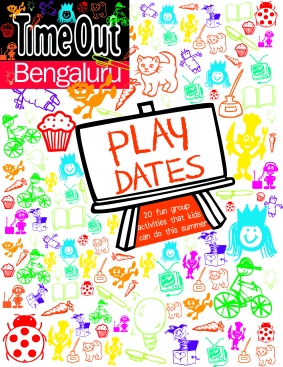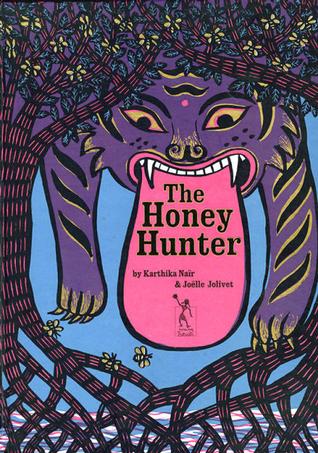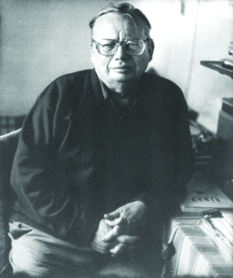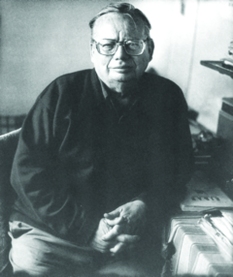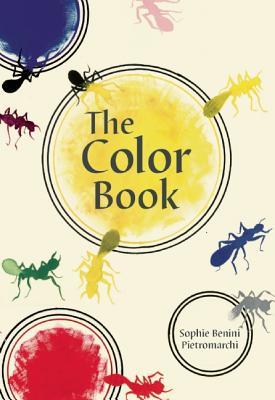Time Out rounds up old and new Indian literary fiction that are themed around cooking and eating
For all those who grew up yearning for scones and slabs of homemade fruit cake thanks to British author Enid Blyton, or wished that the Elven Lembas bread from The Lord of the Rings was real, we thought it’s about time you sampled flavours closer home. Indian literary fiction is steeped in food metaphors. Stories are built on the culinary efforts that go on in kitchens across the country and amateur and professional gourmets often are the star characters in narratives. Time Out picks some of its favourite food moments that are sure to leave you hungry for more.
The Case of the Love Commandos
Tarquin Hall, Random House, R499.
India’s Most Private Detective Vish Puri is back in this latest instalment from Tarquin Hall and this time he is eating his way through Lucknow. For those unfamiliar with this private eye, Puri is one of the country’s most famous detectives. He works out of Delhi and in the past has cracked The Case of the Deadly Butter Chicken, The Case of the Missing Servant and The Case of the Man Who Died Laughing. The stories are rife with quirky and adorable characters, from Puri’s wife Rumpi to his Mummy-ji who is always interfering in cases when really she should “stick to what she is best at: making gulab jamuns and all”. Yet the books go beyond being classic mysteries, offering a slice of India while delving into social-political issues, corruption, Dalit rights, betting and more. When Puri’s mind is not occupied with the mysteries he has to solve, actually even when it is buzzing with these puzzles, he is thinking about food – from the kathi rolls that he has delivered to his Khan Market office to the offerings at the Gymkhana Club. InThe Case of the Deadly Butter Chicken, Puri finds himself torn between keeping a politician waiting or finishing a plate of sev puri with extra chutney and chilli. In Love Commandos, Puri wolfs down galauti kebabs, mutton biryani, sultani daal and kulfi topped with rose-scented falooda, all while following important clues. The book ends with a lovely collection of Lucknowi recipes. We promise that you can’t read the series without wanting to reach for a plate of samosas or jalebis.
Eating Women, Telling Tales: Stories about Food
Bulbul Sharma, Zubaan, R295
Bhanurai Jog has passed away and it comes down to Badibua to prepare his favourite dishes for the death anniversary feast. A cluster of women gather in the kitchen, eight knives deftly chopping big round aubergines, slicing pumpkins, and sorting greens. As the kitchen bustles with activity, one woman points out, “This year the coriander and mint we grew is really good. You can smell the fragrance even before you begin to grind it.” The food memories invoke nostalgia, from which abound stories as the women begin to draw on their experiences and their past. The tales centre on food: a mother trying to win back the affections of her son who now lives abroad with ghee-drenched aloo parathas and jaggery sweets filled with coconut; another woman gearing up to welcome her husband’s family home with different curries and chana paishe, a Bengali sweet made out of fresh paneer; a bride who finds herself chained to the kitchen after she displays her culinary skills. Melancholic, humorous, macabre and poignant, Bulbul Sharma manages to toss together dramatic stories within a story.
The Girl from Nongrim Hills
Ankush Saikia, Penguin, R299
Donbok, popularly known as “Bok”, a guitarist with a Shillong-based wedding band, gets entangled in a vicious plot when his brother loses `50 lakh on an arms purchase trip to Nagaland and finds himself in bad company. Bok not only has to save his brother’s life, he must avoid getting lured by a beautiful, mysterious woman whose intentions seem to be misleading from the outset.
Shillong and its unpredictable weather, its idyllic settings mixed with a tinge of nostalgia, the hustle-bustle of the Polo Bazaar and the clubs, all these elements intertwine to create a gripping atmosphere. As significant as the locations are to the novel, equally important are the little eateries, teashops and jadoh stalls, which often act as a foil to the narrative plot. Bok and his fugitive brother Kitdor meet over steaming plates of Khasi specialty rice and fatty pork cooked with chicken blood at a jadoh stall. After discussing Kitdor’s future, the brothers decide to eat. “They dug into rice cooked with chicken blood and fiery fermented fish chutney. His brother sitting beside him, the kettle boiling on the coals, the patter of rain on the tin roof… it was almost peaceful.”
Other instances of food playing a part in the book include Bok’s dinner table conversations with his parents while eating his mother’s rice, pork with black sesame paste, fried potatoes and boiled vegetables; ordering in egg chow and chilli chicken at The Paradise hotel just before he plans to barge into an adjoining room and steal a bag of money at gunpoint; and The Lhasa restaurant where, to calm himself after being shot at, Bok gobbles up pork momos with a watery chilli chutney and knocks back a stiff peg of Royal Stag whisky.
Gone with the Vindaloo
Vikram Nair, Hachette, R350
This is a humorous tale about the goodness of food that travels back and forth in time as well as between continents. A successful restaurateur by profession, Nair has a palpable love of food combined with a no-holds-barred flair for storytelling. He ensures the committed attention of his readers throughout the book.The story opens in the bustling city of Varanasi during the pre-Independence era. We are introduced to three close friends, Kalaam, Mateen and Arth Purabiya, whose lives are about to change during British rule. As a result, Kalaam, the expert Muslim weaver who possesses the inherent skill of making “brocade”, the most enchanting fabric of Varanasi, is quickly cast off because of the divide and rule policy employed by the British. He is also blissfully unaware that his true calling lies not in threads but amidst pots and pans, spices and herbs. Fortune strikes early as he stumbles upon a group of English burra sahibs on a camping tour and ends up cooking chicken curry and rice for them. Thence begins his culinary expedition – from working as a cook at the Palmers’ residence to perfecting the nuanced vindaloo.
Every dish he cooks is loved and praised by all, but it’s the vindaloo that wins him admiration and fame. His signature style of cooking the dish uses a secret added mixture of tamarind pulp with chilli flakes, sugar and garlic to round off the tart flavours of the synthetic vinegar. Another story runs parallel, about the Mahadev household. An Imperial Civil Service (ICS) member by profession, Mahadev is a classic authoritarian family patriarch. He aspires to rub shoulders with the British and dreams of his son carrying forth his legacy. Pakwaan, who works in his kitchen, yearns to replicate his grandfather’s magical vindaloo, the recipe of which comes to him in a dream and is about to take him places. But cooking is a personal skill; it is instinctive and not merely about following instructions. From descriptions of flatulence to frank gestures of sexuality that border on the coarse, the author leaves no stone unturned to cook a flavoursome story – much like the vindaloo. Readers will leave with a satisfied burp. Arunima Mazumdar.
More than just Biryani
Andaleeb Wajid, Amaryllis, R399
After reading this book, we wondered for days how lauz would feel on our tongues. Lauz is a sugary sweet made of reduced milk turned into khoya along with powdered sugar, which is thickened and made into a dough and rolled out into different shapes. The enigmatic sweet is described in Andaleeb Wajid’s book as “sugary sunshine” that melts on your tongue and “little crumbly sugar-coated bits that dissolve slowly and make you light up from inside”. More than just Biryani is full of such evocative, beautiful descriptions of food that transpires through three generations. The story begins when Sonia Kapoor, a journalist with a food magazine, befriends a young girl called Zubi in Hong Kong after watching a food video done by her. The reticent Zubi gradually opens up to Kapoor and helps her put together a narrative spanning three generations, including Zubi’s mother Tahera and then grandmother Ruqaiyya.
While Ruqaiyya struggles with cooking in the Vellore of the ’50s as a young bride, and slowly realises that desserts such as lauz, badam ki jaali and firni are her forte, her daughter Tahera is known throughout the extended family for her culinary acumen, for her shammi kababs, biryani, khatta sherva, kali mirch ki phaal, kheema samosas and more. When Tahera’s husband dies in a freak accident, life takes a turn for the worse. She goes into a shell and loses interest in cooking. As her wounds heal, her cooking comes back to life. Zubi, who lives in Hong Kong with her husband and child, also finds her own identity and strong connection with her family by recreating her mother and grandmother’s cooking through a video format online. Recipes are woven into the narrative beautifully, rather than conventionally presented, and help move the plot ahead effectively.
The Obliterary Journal vol 2: Non-veg
Blaft, R795.
“Meet your meat” used to be a popular People for the Ethical Treatment of Animals slogan where the animal rights group would reveal to people the cruelty inherent in the meat industry. It could very well fit Blaft’s latest publication, the second volume of their graphic novel The Obliterary Journal.Edited by Rakesh Khanna and Rashmi Ruth Devadasan, the graphic novel brings together works by some of India’s most interesting artists, writers and activists, who look at the social, cultural, ethical and political dimensions of non-vegetarian food in India.
The book starts in a tongue-in-cheek manner with Durrrrk Mister Grinder Serial No 30277XM03’s comic, where a Legpiece has to make its way across a desert (lots of puns here), battling Space Idlies, to deliver, against all odds, this very book to an indie bookstore. Then Aneesh KR traces the history of emu farming, a venture that started with a lot of promise in India and went bust when there were few takers for the bird’s meat. A veggie UK Krishnamurthi talks about how “people eat for pleasure… everything is cultural”. There’s plenty of food for thought in this book, including Appupen’s eclectic renderings of the hunt for what we call “food” in modern times, “How to Make a Bitch Give Up Beef” by Dalit activist/writer Meena Kandaswamy with illustrator Samita Chatterjee, and Sathyanarain Muralidharan and Mihir Ranganathan’s refreshing and quixotic take on the food chain. We will leave you with just this taster to whet your appetite for The Obliterary Journal, but there’s plenty more to explore in the book.
Three Dog Night
Gouri Dange, HarperCollins, R250.
Viva is on the wrong side of 60, but that doesn’t mean she is ready to retire. A widow who lives alone in Mumbai, Viva begins to de-clutter her life, like giving away her gorgeous black coffee/milk-coffee combo Kanjeevaram silk sari to her much younger friend, Moni. Her son and his family live in Pune, and she dotes on her grandson, whom she bonds with over giant glasses of sitaphal milkshake and potato-mince patties. Her daughter is busy saving the world until some mysterious Nepal connection pops up to complicate matters.
Gouri Dange puts together a warm, fuzzy story about relationships, Mumbai and food, and of course animals, all with a healthy dose of wry humour.Three Dog Night is a beautiful read, made even more interesting by the recipes embedded in the narrative. For instance, when Viva gifts her Coffee Crystal sari to Moni, we also get her recipe of the alcohol-laced eponymous caffeine drink. Coffee, demerara sugar and brandy come together in what “wires you up for a range of post-dinner activities, from the routine to the sublime”. When Viva goes out for dinner at the “new off-Colaba Causeway place where the chef-owner combines strange and wondrous things”, she promptly offers a recipe for Fillet of Vietnamese Basa with Dalimbi Usal, the dish that she orders at the restaurant. Not unlike our mothers who eat at restaurants only to size up the ingredients and rattle off a makeshift recipe which tastes exactly like the restaurant speciality.
The Anger of Aubergines – Stories of Women and Food
Bulbul Sharma, Kali, R150.
In this wonderful collection of short stories, Sharma pays tribute to several of her grand-aunts, who were brave, fearless women and knew their way around the kitchen as well the tricky business of dealing with men. Each story is themed around food – food used as a means for passion, as a way to seek revenge and as a handy tool for power. While the title story deals with a couple who hate the sight of each other except when the husband turns up once a week to eat aubergines cooked by the wife, freshly plucked from the garden patch, “Food to Die For” is the story of an old lady who whips up the most elaborate feast for the brahmin priest who will perform the last rites of her dead husband. “A Taste for Humble Pie” sees an orphan girl who is otherwise neglected being fought over by relatives because of her pakora-making skills, “Feasting with a Vengeance” follows the story of newlyweds whose families want to outdo each other in the wedding feast stakes. Every short story is accompanied by a lovely recipe at the end according to the theme of the narrative.
Book of Rachel
Esther David, Penguin India, Viking, R699.
Rachel, who belongs to the Bene Israel community of Danda, Alibaug, lives alone in a house by the sea. Her husband has passed away and her children have moved to Israel. Looking after the village synagogue and creating traditional recipes from Bene Israel Jewish cuisine is her sole focus in life now. With the dwindling Bene Israel community in her neighbourhood, Rachel being one of its last surviving members, she opens and cleans the synagogue every day in the hope that it will once again be a scene of happy, communal gatherings. Rachel also spends her time painstakingly recreating ancient Bene Israel Jewish recipes of dishes such as kippur chi puri or poha cooked with coconut, fried fish, chik cha halwa, a sweet dish made of wheat extract and coconut milk, and mince cutlets. The making of every recipe in this novel also traces its origins and history in the Bene Israel context.
Fasting, Feasting
Anita Desai, Random House, R299.
The novel opens with an important discussion – are fritters enough or must sweets go, too? A package is being sent by parents to their son in the US, and instructions are given to the cook that yes, sweets must be part of it. Anita Desai’s iconic novel is a bittersweet read, delving into the life of an Indian family and their patriarchal attitudes that inform the way their children grow up. Desai writes evocatively in her characteristic style, painting the book vividly with food and how it weaves the complexities of the family that forms her central characters.
Life & Food in Bengal
Chitrita Banerji, Penguin, R195.
Banerji’s seminal book on the eating habits of West Bengal and of Bangladesh, influenced by history and geography, spins a sweet little fictionalised account of a girl called Chobbi who takes us through the vast repertoire of Bengali cuisine and the cultural mores associated with it through her life and her joint family. The recipe section is divided according to seasons, such as basanta (spring), grishma (summer), barsha (monsoon), sharat (early autumn), and hemanta (late autumn), and sheet (winter). Apart from several classic Indian Bengali recipes, you will also find a smattering of those from Bangladesh, such as dimer halua or egg halwa, kamala koi, or fish cooked with orange pulp, and beef or lamb handi kebab.
The Mistress of Spices
Chitra Banerjee Divakaruni, Black Swan, R499.
Thanks to reruns on television, most people are familiar with Aishwarya Rai-Bachchan’s character Tilo, the stunning, mystical woman who runs a magical Indian spice shop in the US. The movie is based on Divakaruni’s book which coaxes open the healing powers and the flavour of spices. There’s plenty of poetry and sensuality in this book, but it’s also over-the-top mystical. Here’s an excerpt: “But the spices are my love. I know their origins, and what their colors signify, and their smells. I can call each by the true-name it was given at the first, when earth split like skin and offered it up to the sky. Their heat runs in my blood. From amchur to zafran, they bow to my command. At a whisper they yield up to me their hidden properties, their magic powers”.
A New World
Amit Chaudhuri, Picador, R395.
Jayojit, a professor of economics, returns from the US to visit his elderly parents in Kolkata with his son Bonny for the first time since his divorce. The book follows the lives of these four characters with the slightly crumbling edifice of Calcutta as the backdrop. Though no real plot changes or turning points happen throughout the book, the protagonists’s descriptions of his mother’s simple cooking and her offerings of hot luchis served with slivers of pumpkin cooked with nigella seeds and green chillies to feed her grandson, or the description of the lifeless mach (fish) which has been brought from the market to be cooked into a watery gravy, are evocative.
Smell
Radhika Jha, Penguin, R299.
After her father is killed in a riot in Nairobi, Leela is packed off to her aunt and uncle’s house in Paris. Leela has a rare quality. She possesses an extraordinary sense of smell. This heightened attribute overwhelms her perception of everything from sex to food. Radhika Jha writes, “When the wind blew hard, as it did very often that spring, the smell of fresh baguette would fight its way into the Madras épicerie to do battle with the prickly smell of pickles and masalas”.
The Vendor of Sweets
RK Narayan, Indian Thought, R120.
Jagan is a vendor of sweets who lives in RK Narayan’s delightful Malgudi. A staunch Gandhian, Jagan’s fragile and unidimensional world becomes confounded when his son returns from the US and questions many of his hypocritical beliefs. While this isn’t exactly a book steeped in food, the sweets and the religious practices of shunning beef are some of the pivotal elements of The Vendor of Sweets.
By Amrita Bose, Bijal Vachharajani on April 11 2014

